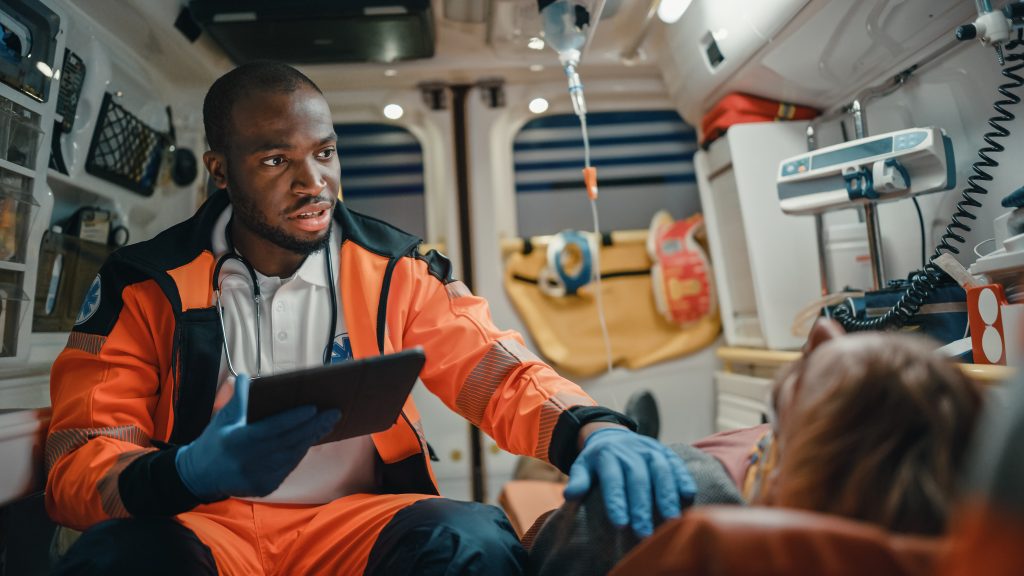According to the Virginia Department of Health, stroke is the fifth leading cause of death in Virginia. Most stroke patients do not arrive to the hospital in time, leading to increased death and permanent disability.
UVA Health’s SCOPES (Strengthening Community Paramedicine and Emergency Services) program aims to bridge the gap by enhancing telehealth capabilities of Emergency Medical Service (EMS) professionals when responding to stroke-related emergency services.
SCOPES was created to develop community health and EMS workforces throughout Virginia, with an emphasis on rural EMS agencies and community health partners in Central Virginia.
Supported by a three-year, $1.5 million grant from the federal Health Resources & Services Administration (HRSA), this program has been actively fortifying health care services in the underserved counties of Buckingham, Culpeper, Greene, Louisa, Madison, Nelson, and Orange.
Prioritizing Education

A cornerstone of this program is its multi-faceted approach to education, training, and technology integration. The grant has facilitated specialized training for paramedics, emergency medical technicians (EMTs), nursing and EMS trainees, and community health workers. The focus areas of this training encompass prehospital emergency care, stroke education, and telehealth training.
Emergency medical technician students at the Charlottesville-Albemarle Technical Education Center and nursing students at UVA Wise also will receive this training.
“This is an important goal of the program. We want to encourage the development of these trainees and get them excited about joining a team of technology savvy healthcare professionals dedicated to ensuring healthy lives for all,” George Lindbeck, MD, Co-Program Director and Associate Professor of Emergency Medicine Director, said in a release.
Implementing iTREAT Technology
Another key component of SCOPES is to expand iTREAT (Improving Treatment with Rapid Evaluation of Acute Stroke via Mobile Telemedicine), the Department of Neurology’s mobile telestroke program. Ambulances across the region are being equipped with iTREAT toolkits comprised of videoconferencing equipment and a high-speed modem. This enables specialists at UVA’s emergency room to administer the NIH Stroke Scale exam during ambulance transport, significantly improving the efficiency of care upon arrival at the hospital.
Swift diagnosis is essential due to the limited timeframe available for administering the most effective medications and procedures for ischemic strokes, commonly triggered by a blood clot in the brain.
UVA Health’s collaborative effort with community organizations and EMS agencies is poised to revolutionize health care services within Central Virginia’s rural communities. By leveraging technology, training, and education, this initiative has been pivotal in bridging the gap in stroke care, ultimately improving health outcomes and reducing disparities in these underserved regions. The commitment to training the next generation of health care professionals ensures a sustainable impact, paving the way for a healthier future in these communities. To learn more, visit UVA’s website.

